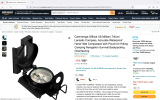jpr9954
AH legend
- Joined
- Feb 16, 2021
- Messages
- 3,284
- Reaction score
- 29,618
- Location
- North Carolina
- Articles
- 4
- Member of
- NRA, SAF, SCI, DSC
- Hunted
- South Africa
I have a number of compasses from Brunton, Silva, and Suunto. I even have a Chinese (Eyeskey) knockoff M2 transit. That said, I'm looking for a decent compass that works in the Southern Hemisphere. Specifically, I want one to take on my trip to the Eastern Cape. I realize it is not "needed" as the PH will do all the navigation.
Along those lines, does South Africa produce topographic maps along the lines of those of the US Geological Survey or the UK's Ordnance Survey maps? It would be nice to have one from the area I will be hunting if only to frame it as a reminder of the trip. I have seen some older maps in digital form online from both the US Army Corps of Engineers and the Red Army but I'd like something on paper.
Thanks
Along those lines, does South Africa produce topographic maps along the lines of those of the US Geological Survey or the UK's Ordnance Survey maps? It would be nice to have one from the area I will be hunting if only to frame it as a reminder of the trip. I have seen some older maps in digital form online from both the US Army Corps of Engineers and the Red Army but I'd like something on paper.
Thanks


